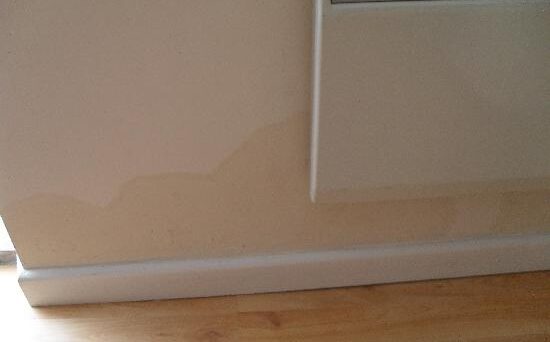Damp Proofing
There are a number of possible sources of a damp or moisture ingress problem typically including rising damp, condensation, penetrating damp, leaks, blocked guttering & poor drainage.

(Above is one example of dampness, due to a higher external ground level and the effective bridging of the damp proof course.)
Penetrating or rising dampness in a building can play host to a number of problems including:
- Damage and deterioration to wall finishes and decorations
- A lingering mouldy odour
- Moisture tide marks on walls
- Mould staining and fungal growth on walls
- Timber problems such as dry rot and wet rot
Rising damp affecting ground floor walls is due to either a defective damp course or a bridged damp course by either internal plaster work or external rendering, high external ground levels can cause lateral penetrating dampness at low level.
In severe cases of rising damp, a tell tale ‘tide mark’ can appear across the wall, along with discolouration and sometimes a prolonged smell. Once contacted by the client, a convenient time will be arranged to call and inspect the property by our CSRT qualified surveyor, he will inspect the areas of concern and consult with the client as to what remedial works if any need to be carried out.
Typically the contaminated plaster is firstly hacked off to a suitable height, then a solvent free environmentally friendly damp proof cream is injected into the mortar joint at the new effective DPC level.
The treated walls are then re plastered using a specialist plastering system to hold back ground salts while drying out is taking place.
We Cover The Following Areas:
Middlesborough, Stockton, Redcar, Saltburn, Brotton, Great Ayton, Guisborough, Stokesley, Hartlepool & Darlington
